Rethinking the iron jenny
Following in the footsteps of auto technology, electric power is the future for sailboats
The crowd at the Hanse Yachts booth was buzzing, and they formed a veritable wall around one particular illuminated case. We patiently inched closer, and then we saw it—the new 315 e-motion rudder drive, which the German boatbuilder developed in conjunction with Jefa and Torqeedo.
This drive replaces the Hanse 315’s diesel engine and complete saildrive with a 4-kilowatt electric motor and folding propeller, which are both integrated into the rudder shaft. The result? According to Hanse, sailors will enjoy improved maneuverability, less drag, less maintenance and propulsion that is quiet and emission-free.
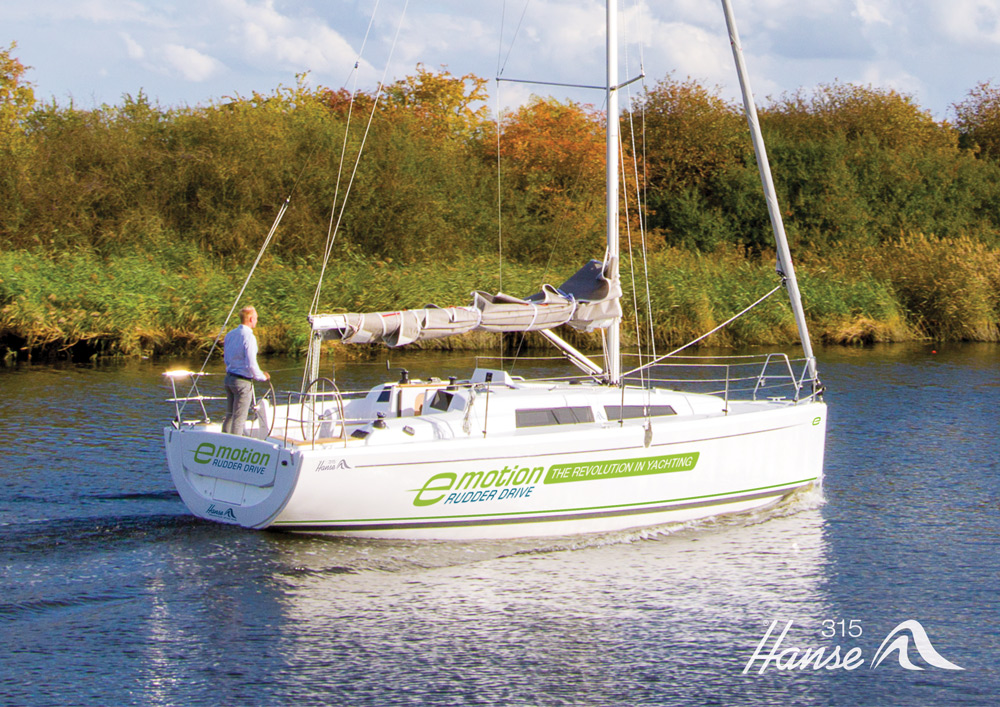
This has broad appeal in the European market, where fuel is expensive (think $8 per gallon). Companies like Oceanvolt in Finland and GreenStar Marine in Sweden have been working hard to meet swelling demand for propulsion that is sensitive to the environment and has a lower cost of operation.
Indeed, the Hanse Yachts booth wasn’t the only one thrumming with talk of electric propulsion at the Boot Dusseldorf show last January, with a variety of innovators and boatbuilders eager to demonstrate the latest technology at this important show.
Europe has adopted electric propulsion much more quickly than the United States has, and our time in Germany begged the question: Is there something we don’t know?
This isn’t exactly newfangled technology
Electric boats date back to the 19th century. Elco Motor Yachts, then called the Electric Launch Co., built 55 36-footers for the 1893 World’s Columbian Exposition in Chicago.
“Until the 1800s, you only had sails or oars,” said Joe Fleming, head engineer at Elco. “There was no other way to make a boat go, until steam came along. Then, by the turn of the 20th century, you had gas, diesel and electric engines. Electric prevailed until about 1915, but then the market wanted to go fast, and it favored gas, diesel and the internal combustion engine.”
So electric motors are not a new concept, but for a long time they had to use DC power. AC propulsion simply wasn’t feasible until advances in inverter technology allowed DC to be converted variable frequency AC. Enter the modern era.
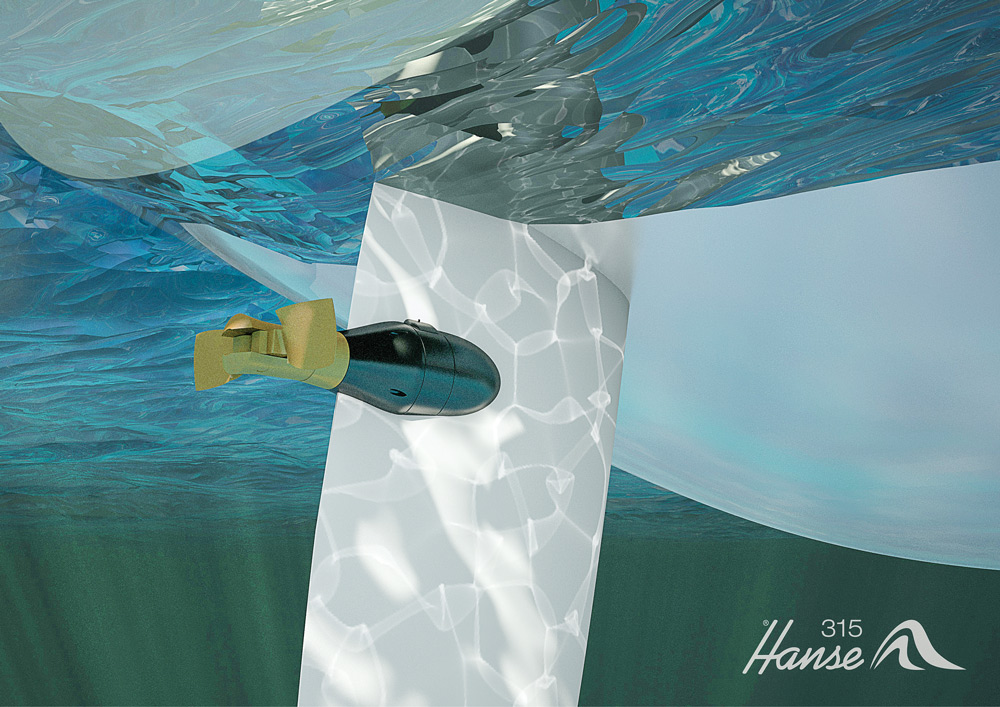
“These are high-capacity AC motor systems that can run on DC stored power and recharge at the dock or with generators,” said Mike Gunning, industry expert and owner of Electric Yachts of Southern California. “The technology is well proven.”
You don’t have to buy a new boat
Today, and for the next several years, the biggest growth opportunity for electric propulsion lies in repowering.
“Think of it this way,” Gunning said. “There are just a few hundred new boats each year, but there are hundreds of thousands of older boats that need repowering. Look in any marina. The boats’ average age is probably around 20 years.”
Any of them is eligible for a repower with an electric motor, according to Fleming.
“There is literally no limit for sailboat conversions,” he said. “You can take the diesel engine out, eliminate all the plumbing, through-hulls, exhaust system, fuel tank and fuel, and then drop in the electric motor. It’s designed to fit exactly in the footprint of the old engine, no modifications are required.”
Repower projects can range from a Marshall Catboat to a 60-foot, 45,000-pound, custom passagemaker. Boats 30 to 40 feet in length comprise the lion’s share of the repowers, although the fastest-growing group are boats 40 feet and up. And, owners can turn to their favorite local marinas or boatyards, provided they can install the batteries and handle electrical wiring.
“There’s no magic,” Fleming, chuckling. “I think that’s why so many marinas have asked to become dealers. The motors are prewired; you drop it in, and it’s running in two minutes. There’s nothing to it.”
Some boat owners choose to handle the installation themselves. A handy DIYer just needs the right tools.
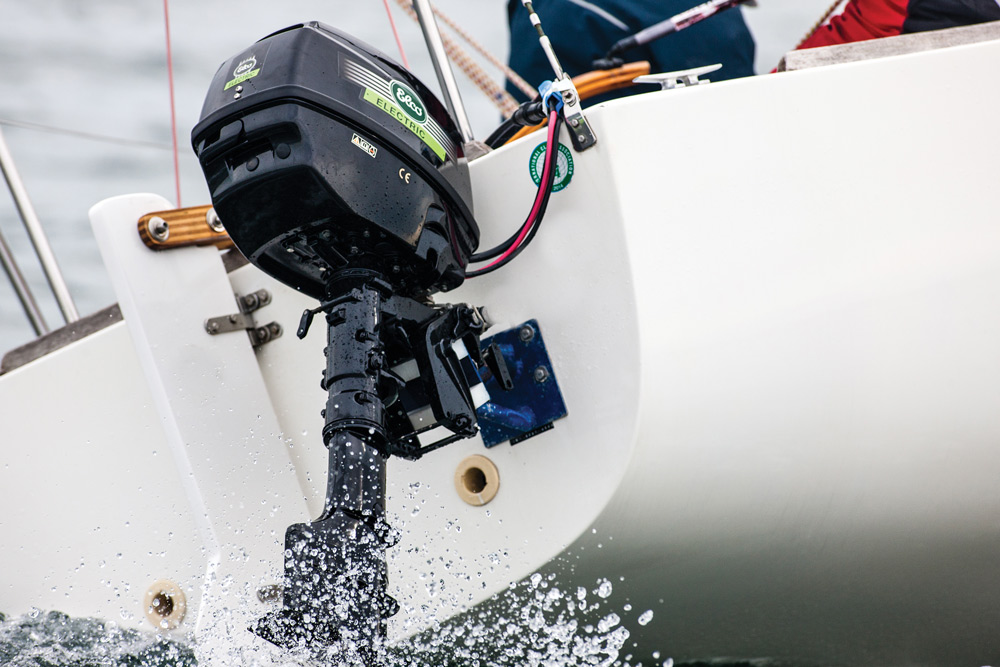
“The motor will arrive on your doorstep, and you can install it where your old diesel or Atomic 4 was,” Gunning said. “Each motor is engineered for a specific boat and unique customer. It just drops in place, and you plug and play.”
Sailing can be even better
It’s not just about eliminating your carbon footprint or reducing fuel costs, although both motivations certainly have merit. According to both Fleming and Gunning, a major benefit with electric propulsion is the day-to-day experience.
“Let’s face it, if you’re living aboard a sailboat for a weekend, a week or a month, you’re living in the bilge,” Fleming said, “and the boat has a permanent unpleasant smell from the diesel. When you install an electric motor, you take out the engine and the clutter of wiring, clean out the oil and other junk, and paint the engine compartment white. It stays white, the mess is gone forever, and the boat smells fresh.”
At the dock, while the sailor with diesel power is checking fuel and through-hulls, warming up the engine for 10 or 15 minutes and waiting to cast off, the sailor with electric power throws off the docklines, turns on the batteries and is bound for the harbor mouth in barely five minutes.
Then there is the sailing experience itself. The electric motor can do things the diesel won’t.
As Gunning noted, motorsailing with a diesel engine is “the most un-fun thing you can do.” Without the engine — and its attendant vibration, noise and fumes — the sailboat feels like a sailboat again, and owners can take advantage of using their electric power in conjunction with their sail plan for interesting results.
“You can spin the propeller at an rpm that supports how you’re sailing,” Gunning said. “For example, if you’re sailing at 4 knots with the motor in forward, low rpm, your six-blade prop is going to reach the speed of the water column it’s going through.
“From an engineering perspective, that means you’re eliminating your displacement drag,” he continued. “You’re maximizing the power of the wind while reducing your drag coefficient. That kind of control means you’ll be able to point higher, arrive at your destination with fewer tacks, and enjoy light-wind days more.”
Fleming pointed out that electric power facilitates better weight distribution and stability on board, as owners can store the batteries lower in the vessel than fuel tanks. He also noted a couple of additional benefits.
“Moving between forward and reverse is instantaneous,” he explained. “There’s no shifting. With diesel, you have to throttle back, shift, and then throttle up.”
That proves valuable when maneuvering in close quarters, like a busy marina or popular city dock. Diesel has to wind up for full torque, whereas electric provides full torque at 1 rpm.
“You can drive your boat right into your slip and stop, even if you’re moving at just a quarter of a knot,” Gunning said. “You’ll still have control at low speeds.”
Then there is the speed-control factor, much like cruise control in a car.
“Let’s say you have a nice wind, and you want to go 6 knots,” Fleming said. “You run the motor at 6 knots and raise the sails. If the sails want to do 7 knots, the extra energy puts charge back into the batteries. If the wind dies, or if you want to go on a different heading, the motor will hold you at 6 knots. It’s excellent when you’re trying to get from Point A to Point B.”
Different solutions for different sailors
Getting from A to B is a concern for many sailors, who do need to carefully consider how they use their boats. How will electric power work for the daysailor, the weekend coastal cruiser and the passagemaker?
With electric power, daysailers have a range that’s more than sufficient. Long-distance, open-water cruisers will find the boat has adequate propulsion for hull speed-plus; they’re also carrying additional batteries for house loads, a generator, and perhaps equipment for solar and wind power as well. This will offer a lot of flexibility.
It’s more complicated for coastal cruisers, especially those who have 9-to-5 jobs, families, and a variety of time constraints. These sailors likely need to fit their round-trip cruises into just 48 hours.
“They’re interested in the ability to go from ‘turned off’ to ‘full power’ in seconds, and they like the idea of improving their sailing experience,” Gunning said. “But it’s harder for them, because of the batteries. Sailing is going to take too long, so they’re motorsailing or motoring. They might need to go 50 nautical miles, but a starter battery might only last for 20 nautical miles.”
For those sailors, an onboard generator is a good solution.
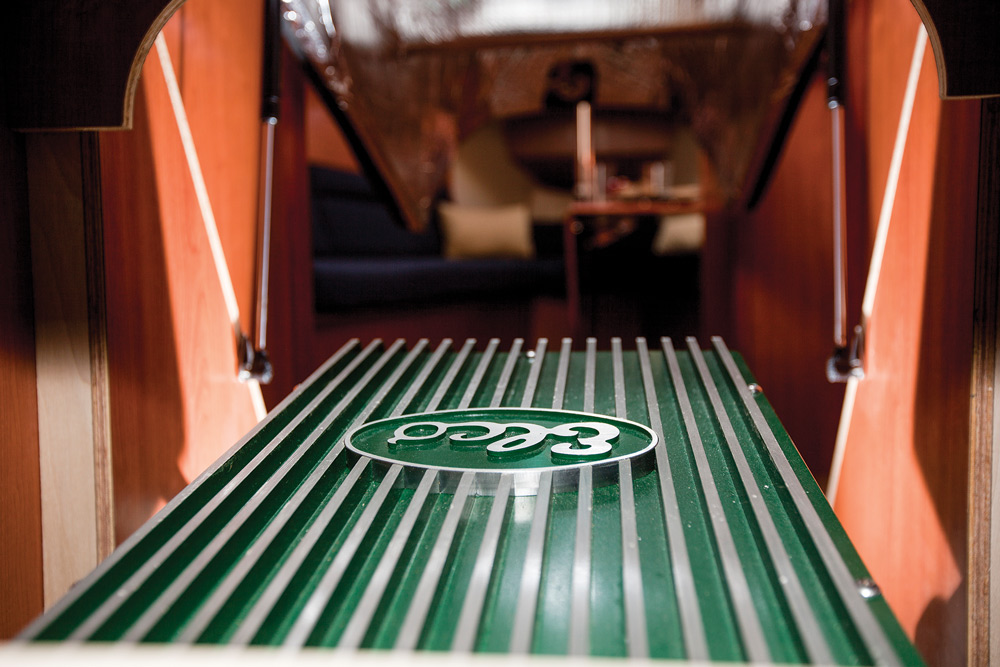
“You can mount the genset in its own compartment, so the drippings aren’t contaminating the bilge,” Fleming said. “It can provide power for the motor if you need to recharge and don’t have access to shore power at the dock.
“We repowered a 36-footer out of Newport Beach, California,” he continued. “The owners can go to Catalina Island on a single charge, they recharge while they’re there, and then they come back on electric. You can run indefinitely with a genset, as long as you have fuel on board.”
Think of the Energizer bunny
Today’s electric motors have a life span (also called “mean time between failure”) of 20,000 to 50,000 hours, compared to a diesel engine’s operational life of perhaps 10,000 hours. Realistically, many of those diesels might only last 1,500 or 2,500 hours due to a harsh marine environment, dozens of moving parts, and lack of regular service and maintenance.
With an electrical propulsion system, on the other hand, there are no forgotten seacocks, no accidental sucking of water into the exhaust, and essentially a single moving part. Routine maintenance involves checking the batteries and occasionally replacing the ball bearings.
“Look in New York State alone, where there are many 100-year-old electric boats still running with their original motors,” Fleming said. “I’ve seen an electric motor from 1903-05 that’s still running, with the same motor and the same bearings, as if it just left the factory.”
That particular vessel sank in fresh water and later was raised. The boat shop simply cleaned the engine up and put it back together; it’s still running today, at more than 110 years old.
“These are high-quality industrial products, and there are so few that fail,” Gunning said. With a laugh, he added, “Otherwise, every elevator would have a little gasoline motor, just in case.”
The future looks electric
As marine power has marched through history, improving efficiency has been the name of the game. Steam engines are roughly 10% efficient. Gas is about 25%, and diesel is 35%.
Electric is more than 90%.
“We’re essentially using the same motor technology Tesla is using,” Fleming said. “Electric motors are there; in 20 years, they’re not going to be that much more efficient. In fact, the electric motor you have now will still be fine in 2050. Batteries — that’s the 800-pound gorilla in the room.”
Today’s batteries have roughly 1/20 of the energy content of diesel fuel. That means diesel fuel delivers five to six times more energy than modern batteries, pound for pound.
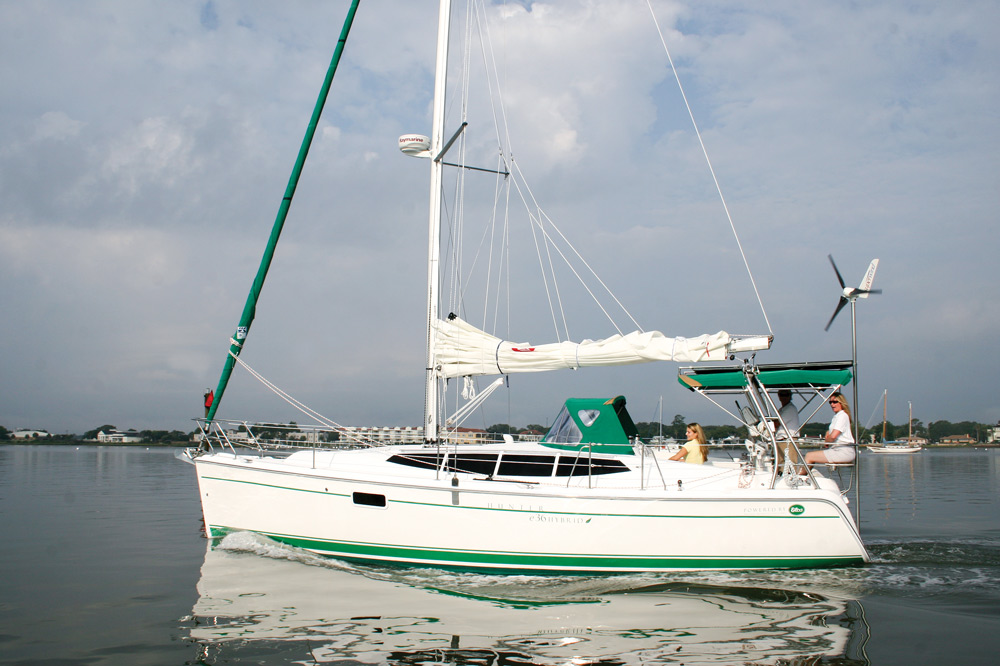
Advances are likely to come from the automotive industry, which has fully embraced electric propulsion technology. Tesla, GM, Toyota and other manufacturers are already leading the charge to develop better lithium batteries.
“Lithium sulfur batteries are coming along that will halve the gap,” Fleming said. “Others are probably five to 10 years down the road. When that happens, there will be no reason to have internal combustion engines that are 25% to 35% efficient. They will be replaced.”
Trains have been diesel electric for some time, as are many cruise ships. Cunard’s Queen Mary 2 uses integrated electric propulsion. Airbus and Boeing already have electric airliners on the drawing board, and the automaker Volvo has announced it will be all electric by 2019.
The recreational sailboat industry won’t be far behind.
“Electric motors are smaller and lighter than the best gas and diesel engines,” Fleming said. “When the batteries get good enough, and provide more energy pound for pound, all boats will be electric. Within 50 years, I think everything that moves will be electric.”

Comments